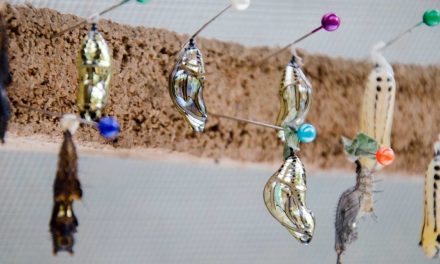I ngapirca is the largest and most intact collection of Cañari-Incan ruins in Ecuador. The site isn’t Machu Picchu, but don’t despair; the collection of ruins are a great introduction to both the Incan and Cañari cultures and are well worth a visit of a couple of hours. The site is a two hour trip by bus from Cuenca or you can arrive late in the afternoon, stay the night at the local Posada Ingapirca, and tour the site first thing in the morning.
The park is designed so that a tourist can walk the trails without a guide. Educational signs are placed at convenient intervals and are in Spanish, Quichua, and English. If you have never visited an Incan ruin before, I would recommend walking the grounds with a guide as there are many little facts to learn that can’t be found on the information signs. You can arrange for a free guide when you pay for your entrance into the park.
When you first enter, your view is of the entire complex. A short walk in and you will find yourself immediately in front of a set of circular stone formations, the ancient remains of old grain silos. Beyond those are the foundations and remaining walls of several buildings. This area is also referred to as Pillaloma. Then the the ground drops away to form a large green space marked by a set of half circle retaining walls that look like an amphitheatre in a modern park. Far in the distance, on ground that has once again risen to the same height as where you currently are, is an edifice that is hard to make out against the larger hill behind it. It is the gem of the entire complex but at this point, that is hard to tell.
The path takes you past an ancient burial ground, one that was used by the Cañari, people who lived in this area thousands of years before the arrival of the Inca. In fact, most of the buildings in this part of the complex have Cañari origins. We can tell because the Cañari did not cut or polish stone for their buildings but used them in their natural state. Further down the hill, we see more evidence of this building style – a set of stairs made from uncut river stone run along side a set of basins obviously meant to hold and channel water. When the Inca arrived, there was clearly a vibrant civilization already in place.
Modern archeologists believe the basins where used by the Inca as ceremonial baths. From this same vantage point, you get one of the first good views of the Incan construction across the way. You can see, even from a distance, that stones are shaped and fitted together very closely, a method used by the Inca to build important buildings like temples or palaces. The stones themselves are a golden green and stand out from the dark gray river stone used almost everywhere else in the complex.
The path continues to meander across the complex so that you will find worthy vantage points for excellent photos while slowly making your way past old stone building foundations. Some of the old foundations have become home to collections of found objects, like old mortars and pestles.
Just before arriving to the Incan construction, you’ll see a few stones that have holes drilled into them. The belief by some modern archeologists is that these stones were used as a type of agricultural calender. The holes would be filled with water that would reflect the night sky. When certain astronomical objects, like the moon, or a planet, or a particularly bright star, matched a certain depression in the stone, it would be a sign of a change in seasons. Some of these stones are huge, with multiple depressions, as many as 20 or so, while others are small with only a couple of depressions. Again, archeologists say these come from the Cañari, not the Inca, though we know from many Incan archeology sites that the Inca had a very firm grasp of astronomical concepts.
At this point, the buildings of this complex change in style. Some buildings still use uncut river stone but often the doorways use cut stone. The further we walk in, the more Incan the structures appear. Many of these buildings are thought to be part of the government administration or the military that the Inca would have assigned to this location. There are also signs that many may have had a religious purpose.
Many of the buildings are arranged around courtyards and are called the «House of the Virgins» because archeological evidence show that women lived here. There seems to be some debate as to the role of these women. I’ve read that they were the actual religious power at this site and were considered high priestesses. But I’ve also read that they were servants to the Incan elite or that they were virgins hidden from view for later sacrifice. Because there is remarkable debate about sacrifice and ancient cultures of South America, it becomes hard to separate scientific fact from myth and from history written in the post-colonial point of view. We may not understand the true role of these women for a long time to come.
Carefully collected in a corner of the complex are dozens of cut stones that came from walls and doorways and have yet to be reconstructed. They are a reminder that this archeology site was not found intact but that much of it has been reconstructed. However, many of the cut stones are fit together so tightly that a knife blade could not enter between them. These stones have not been touched since they first were placed in walls.
And what a view of walls you will have! Finally, you will be looking up at the structure that has acted as a magnet the entire time. The building itself has several names, reflecting the debate over its original purpose. Some call it the Quebrada del Sol or Templo del Sol (Ravine of the Sun or Temple of the Sun), while others call it El Castillo or The Castle. What seems to be clear is that the structure was built atop a rock that the Carañi worshipped before the arrival of the Inca. Several retaining walls help support the structure.
The differences in their construction and that of the building itself make a compelling example of how a sacred space was built very differently from a non-sacred one. The wall in the foreground is made from cut stone but uses mortar to help hold the wall together. It was not considered sacred. But as your eye travels upward you’ll notice that extreme care was taken to cut the stones placed in those walls and that no mortar whatsoever was used.
It is an amazing feat to build such an edifice that can survive the centuries, even when we take into account that some of these stones have had to be replaced. In several of these buildings, you’ll notice niches were built directly into the walls. We learned during our travels in Peru that the Inca built niches for several reasons, some for basic storage but others with great religious significance.
For example, in one building near the temple, there are seven niches a long a back wall. These could signify the seven colors of the rainbow, a sacred object to the Inca.
The number four could refer to the cardinal points of the compass which we see repeated again and again in the Andean symbology including the famous Andean cross. The number three is linked to the three worlds of Incan cosmology, the lower, the higher, and the world in which we live. Of course, we are guessing at meaning and will probably never know the exact use of either the buildings nor the niches within.
At the top of the stairs, you’ll likely find tourists taking photos while sitting in the niches of the temple. Although people are asked not to climb on walls, sitting in niches seems to be a common activity for many.
You can see much more than just the temple. From this vantage point, you’ll be able to see the countryside all around, including farms that use dressed stones from Incan ruins in their foundations and walls, hillsides with other traces of Incan culture, and farms for miles around. Take some time to enjoy the view and to wait for a moment in between tour groups when you can snap a photo of the castle itself without your fellow tourists. For a moment, you can enjoy the tranquility of the temple and maybe find connection with the people that used to live here.
Ingapirca Trail Head
Information For Your Trip
Most people plan day trips from Cuenca to visit Ingapirca.
- Direction by Car, use WAZE and look for Ingapirca, Provincia de Cañar.
- Direction by Public Transportation Purchase a ticket to Ingapirca from the main bus terminal in Cuenca. You can use this Horario de Buses to find times of buses leaving in the next day or two.




























